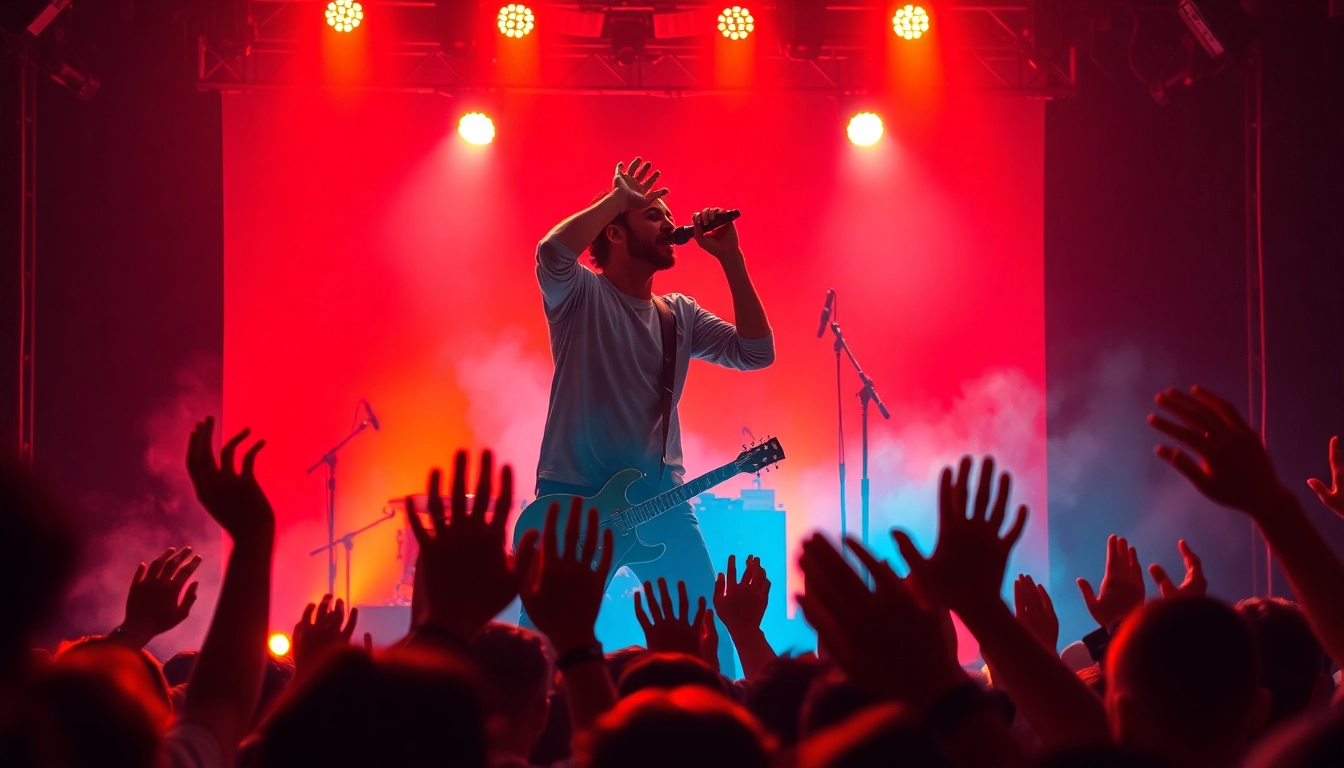Understanding Performance Dynamics
In the realm of the arts, the unique artistry of performance has a profound significance that stretches far beyond mere entertainment. Performance encompasses a wide spectrum of disciplines—from theater and dance to music and spoken word—each requiring a blend of skill, creativity, and emotion. A successful performance not only showcases talent but also evokes feelings, inspires thoughts, and creates lasting connections with the audience. At its core, performance serves as the essence of communication between the artist and the audience, highlighting the crucial nature of crafting an engaging and memorable presentation.
The Significance of Performance in Arts
The power of performance lies in its ability to convey stories, emotions, and messages that resonate with audiences. Traditionally, it has been a medium for cultural expression, providing insights into societal values, historical contexts, and human experiences. Renowned performers often draw from their personal narratives, allowing them to infuse their work with authenticity that audiences can deeply connect with. Performance in the arts is not merely a showcase of technical prowess; it is an invitation for audiences to explore new perspectives and delve into emotional landscapes fashioned by the artist’s vision. This capacity to connect forms the backbone of why performance is revered in the arts community.
Components of a Successful Performance
To truly understand the dynamics of performance, it is essential to dissect its core components. A successful performance typically consists of the following elements:
- Preparation: This involves rehearsing, fine-tuning technical skills, and understanding the material at a profound level.
- Storytelling: The narrative weaving through a performance can captivate or disorient an audience, making each word and movement vital.
- Connection: Building a rapport with the audience enhances engagement, turning a performance into a shared experience.
- Technical Execution: Mastery over the performance medium is critical—be it acting, singing, or dancing—for delivering a polished presentation.
- Feedback Integration: Utilizing audience feedback post-performance can help an artist refine their craft continuously.
Identifying Audience Expectations
Another integral part of performance is understanding what the audience hopes to gain. Each performance setting—be it a grand theater or a cozy café—comes with its own set of expectations. To meet and exceed these expectations, performers must consider:
- Demographics: Familiarizing oneself with the audience’s background can provide insights into the most effective ways to engage them.
- Context: The occasion (a gala versus a casual open mic) plays a significant role in audience anticipation and receptiveness.
- Previous Experiences: Audiences often come with preconceived notions based on past performances of similar nature, so it is crucial for performers to break new ground while honoring the expectations.
Developing Performance Skills
To elevate one’s performance abilities, a strategic approach to skill development is vital. Here are some essential methods to cultivate robust performance skills:
Essential Techniques for Performer Growth
Mastering performance techniques involves a multi-faceted approach:
- Training: Engaging in formal education and training programs tailored to specific performance arts can lead to significant growth.
- Workshops: Participating in workshops led by seasoned professionals exposes performers to new techniques and methodologies.
- Mentorship: Seeking mentorship from established artists provides insights that can expedite one’s learning curve and enhance knowledge.
Practicing for Maximum Effectiveness
Effective practice is a structured and conscious effort to improve performance. Key strategies include:
- Focused Rehearsals: Breaking performances into manageable segments allows for targeted improvement.
- Mock Performances: Simulating real-life performance conditions during practice can alleviate anxiety and build confidence.
- Recording and Reviewing: Capturing rehearsals on video can help performers critique their technique and make necessary adjustments.
Feedback and Continuous Improvement
Utilizing feedback for continuous improvement is vital for any performer. Strategies comprise:
- Soliciting Audience Feedback: Engaging with audience members post-performance can provide valuable insights into their experiences.
- Peer Review: Exchange reviews with fellow performers can open up new avenues for growth and collaboration.
- Self-Reflection: Taking time to analyze one’s performance, identifying strengths and weaknesses, fosters a culture of self-improvement.
Creating Engaging Performance Content
A performance devoid of engaging content can leave audiences feeling disconnected. Here are some techniques to create captivating performance content:
Storytelling Techniques for Performers
Storytelling is at the heart of every performance. Techniques to enhance storytelling include:
- Character Development: Investing time in developing characters can bring authenticity and relatability to the performance.
- Building Tension: Crafting narratives that build tension and resolution keeps audiences on the edge of their seats.
- Emotional Arcs: Incorporating emotional highs and lows can resonate deeply, fostering empathy between the performer and the audience.
Using Visual and Audio Elements
The integration of visuals and audio enhances the overall impact of a performance:
- Set Design: A thoughtfully designed set can transport audiences into the world of the performance.
- Lighting: Strategic lighting helps to emphasize emotions, moods, and focuses within the performance.
- Music and Sound Effects: Effective use of sound can heighten emotional responses and complement the narrative.
Incorporating Audience Interaction
Inviting audience interaction can enrich the performance experience:
- Q&A Sessions: These offer a platform for audiences to engage with performers, deepening the connection.
- Participation: Elements that involve the audience—such as call-and-response or physical activities—can elevate engagement levels.
- Social Media Integration: Leveraging social platforms before, during, and after performances encourages audience involvement and broadens reach.
Performance Metrics and Analysis
Understanding performance metrics is fundamental to refining and enhancing performance skills. Key metrics to track include:
Key Performance Indicators (KPIs) to Track
Establishing KPIs provides a framework for evaluating performance efficiency. Notable KPIs include:
- Audience Size: Tracking attendance can provide insights into reach and performance popularity.
- Engagement Scores: Evaluating audience interaction during performances (e.g., participation rates) can help gauge effectiveness.
- Social Media Mentions: Monitoring mentions and discussions can indicate audience sentiment and engagement post-performance.
Evaluating Audience Reactions
Beyond quantitative metrics, qualitative analysis of audience reactions offers valuable insights. Techniques for evaluation include:
- Post-Performance Surveys: Distributing surveys can capture audience perceptions and attitudes.
- Social Media Analysis: Scrutinizing comments and feedback online sheds light on audience sentiment.
- Focus Groups: Bringing together select audience members for discussions can provide in-depth insights into perceptions and experiences.
Adapting Based on Performance Feedback
Flexibility in adapting performance based on feedback is crucial for growth. Key strategies include:
- Adjusting Content: Revising narratives or segments based on audience reactions can enhance future performances.
- Iterative Rehearsals: Implementing feedback into rehearsal sessions fosters continuous improvement.
- Training: Engaging in further training to address weaknesses highlighted by audience feedback can fortify skills.
Future Trends in Performance Arts
The landscape of performance arts is ever-evolving, influenced by technological innovations and societal changes.
Technological Innovations Shaping Performances
Technological advancements in recent years have left a significant imprint on the performance arts:
- Virtual Reality (VR): Some performances are now accessible in virtual formats, allowing for immersive audience experiences.
- Live Streaming: Offering live-streamed performances has broadened audiences and access points for engagement.
- Augmented Reality (AR): Integrating AR in performances can create interactive elements, invigorating traditional narratives.
Emerging Styles in Performance Art
New styles and genres are arising within the performance arts landscape:
- Multidisciplinary Art: The fusion of various art forms—like dance, music, and theater—often results in groundbreaking experiences.
- Political and Activist Performance: Performances focusing on social issues not only entertain but provoke discussions and awareness.
- Experiential Performances: These performances prioritize audience experiences, often breaking the fourth wall for deeper immersion.
Strategies for Staying Relevant in a Changing Landscape
To navigate an ever-changing performance landscape, artists can employ several strategies:
- Continuous Learning: Embracing lifelong learning through workshops, classes, and mentorship keeps skills sharp and relevant.
- Networking: Building relationships with fellow performers and industry professionals opens avenues for collaboration and innovation.
- Adaptability: Staying open to feedback and willing to experiment with new styles and formats can ensure longevity and resonance in performance arts.



